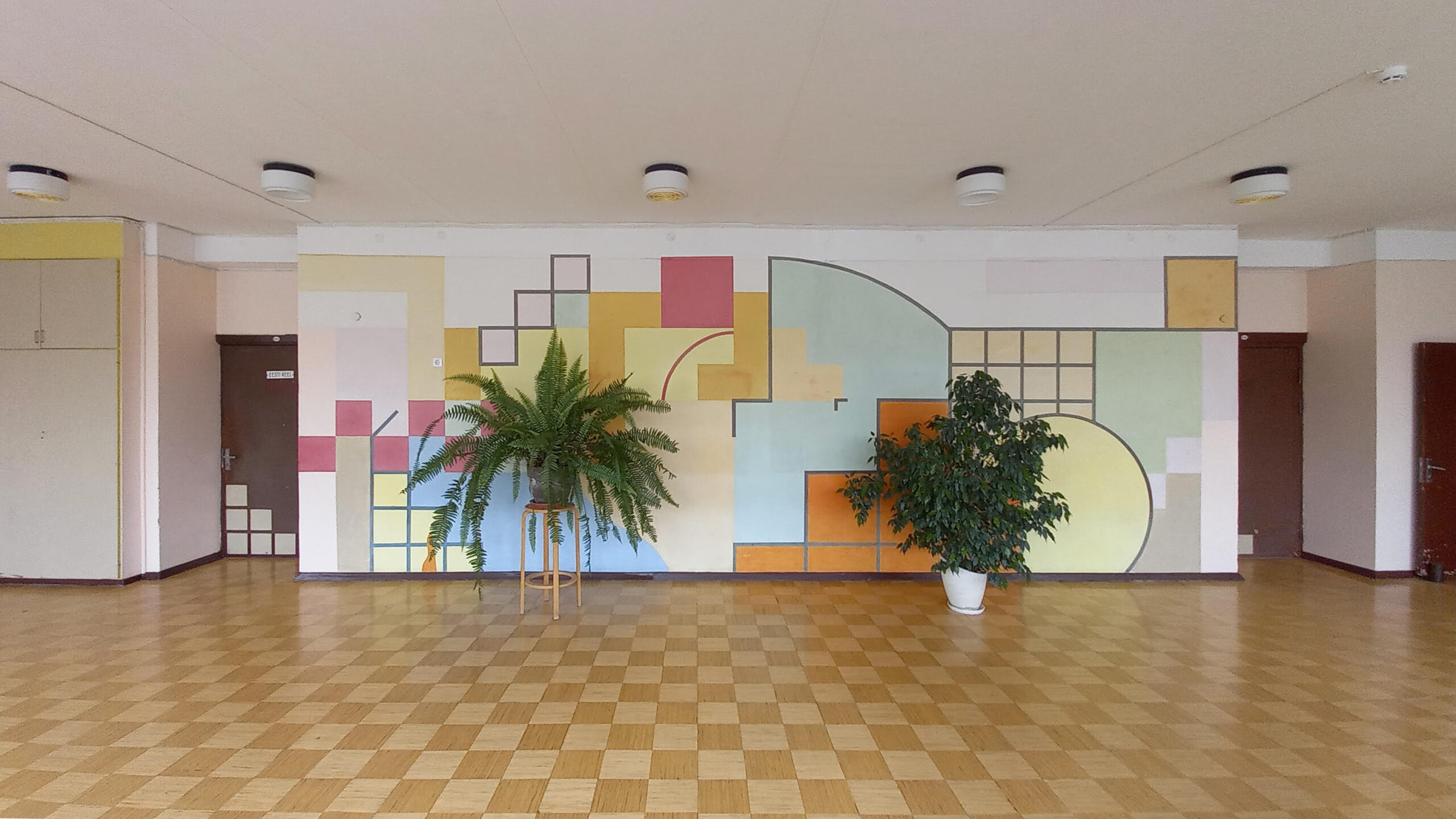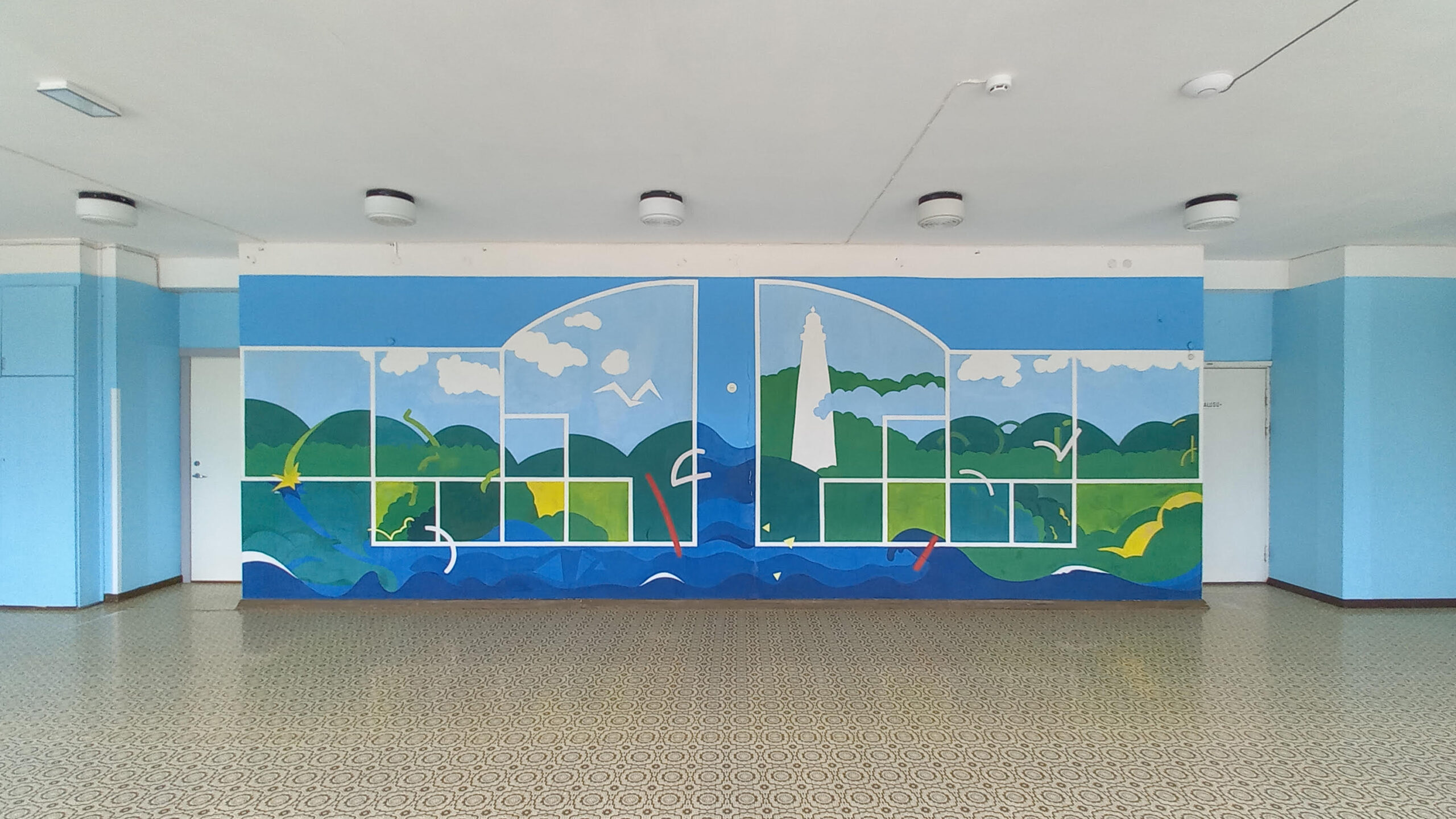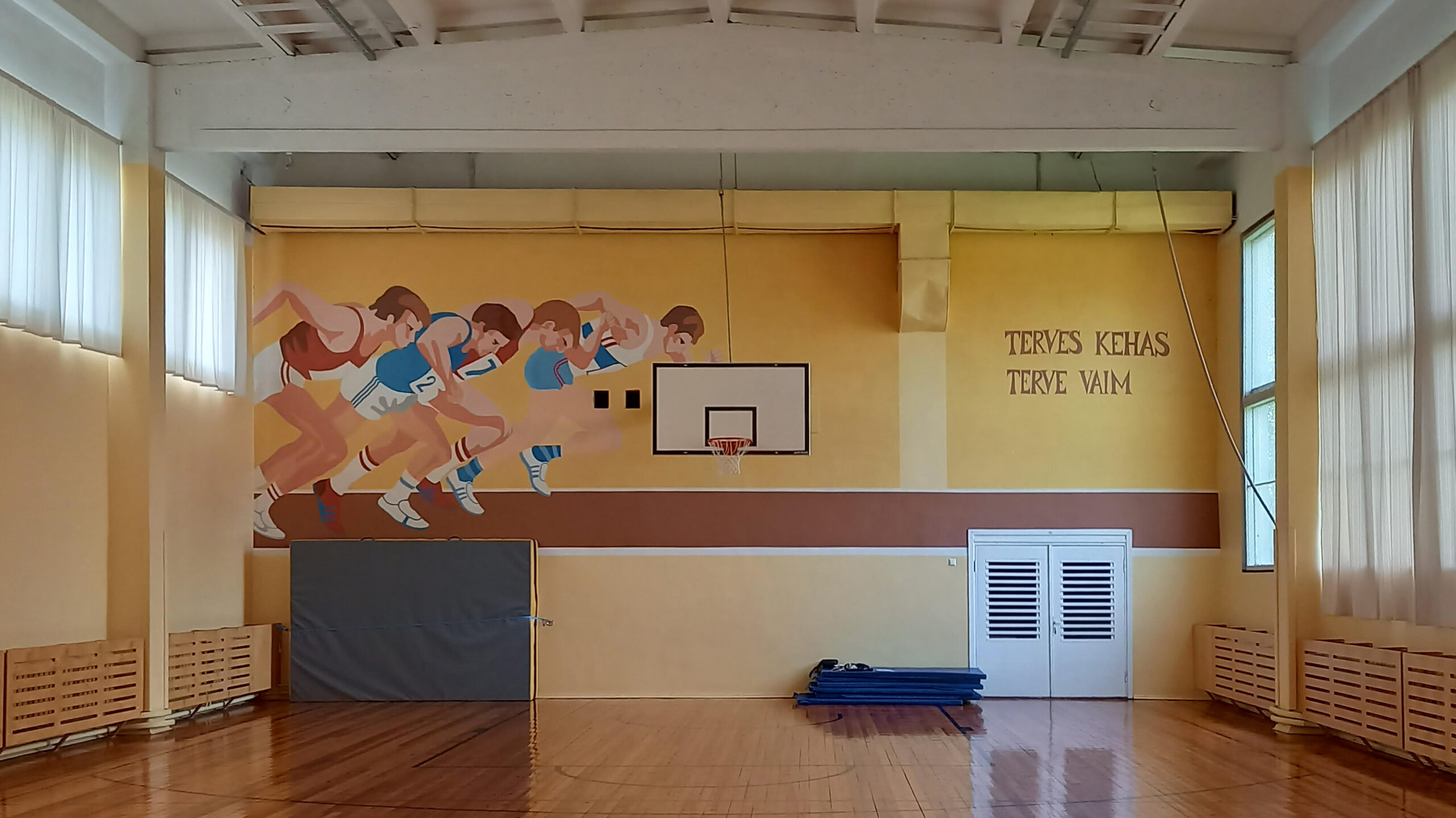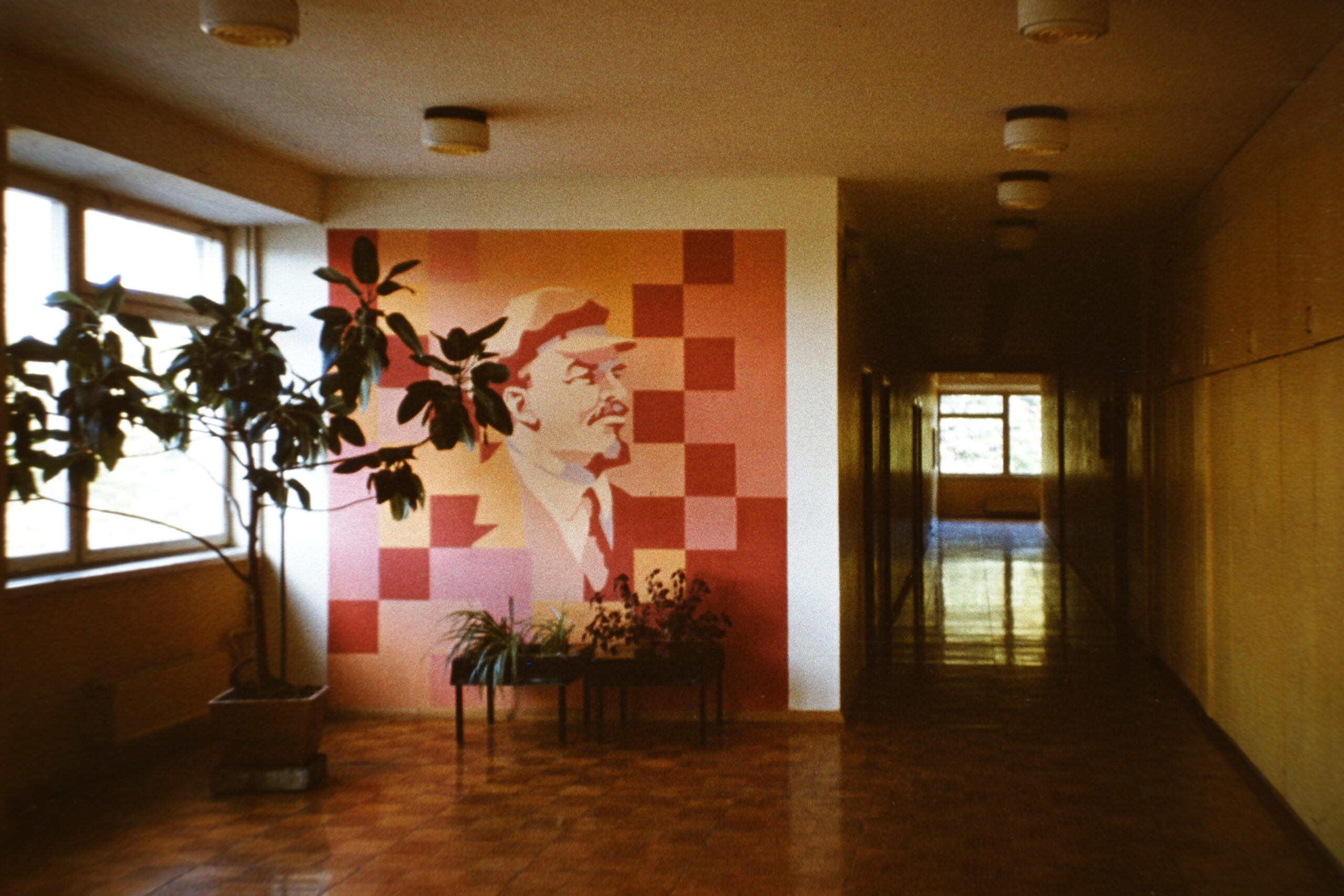Pannels in Kihelkonna School, Saaremaa
Year of completion: 1987
Address: Saare County, Kihelkonna, Kooli 1
Authors: Estonian Students Building Brigade’s (EÜE) Väinamere area design group, Estonian Academy of Art (EKA) architecture students and other higher education students, instructed by architect Tõnu Halberg
Construction paint and tinting paste
Not under conservation as a cultural monument
In the late 1980s, a design group of a sort operated under the wing of EÜE (Estonian Students’ Building Brigade) in Saaremaa. The friend group, composed mostly of architecture students attending the Estonian Academy of Arts, but also incorporating historians, musicians etc. from other higher education institutions, began decorating the rooms of schools and other establishments all over Saaremaa. Their works included supergraphics on the exterior façades of buildings but also paintings in interior spaces. An especially strong mark was left on Kuressaare but most of those artworks have not survived.
Painting in Kihelkonna School required living on site in the schoolhouse for weeks. The process began with drafts, the final version of which generally had to be approved by the lead architect in Kuressaare at the time, Lilian Hansar. Transferring the design onto the wall was done with the help of grids, and sometimes an enlarged slide from a slide projector. Mixing white construction paint with Flora toning pastes in primary colours made it possible to create all the necessary tones, but the acquirement of materials was an action unto its own every time, due to the shortage of goods around the end of the Soviet Era.
The nearly eight-metres long walls on the school’s second and third floor are covered by two geometric paintings. The painting in warm tones on the second floor represents pure geometry, the third floor’s pannel in green and blue has more of a narrative. The sea and forest landscape with local colouring, in the middle of which shines the silhouette of the Vilsandi lighthouse, flirts with the novel form techniques of Estonian painting art – here and there, arched figures reminiscent of the art of Andres Tolts are flying around. An architectural coordination-oriented approach has set a white geometric frame on the image surface, allowing the natural elements to clear into artistic generalisations. The composition on the wall of the gym does not employ geometry, however, the figures are conveyed in generalised form, accompanied by the slogan “Terves kehas terve vaim” (“A sound mind in a sound body”). The art of the EÜE students was apolitical, apart from the last painting, created following the initiative of the principal at the time, Raivo Kallas, to “enhance the school ideologically”. The corridor wall on the second floor was embellished with Lenin wearing a flat cap, the realistic portrait surrounded by a cubist grid, tying the special commission to the geometric pannel on the other wall of the same room. The principal has regretted that the former had to be painted over already a year later with the changing times.
The school management has prized the paintings. Considering the pannels location in heavily used corridors, their overall condition could even be regarded as good. The colour has faded in spots, there is damage to the surface and cracks in the plaster. The paintings, which have a refreshing effect to this day, make the space more humane and enrich the rural school’s environment. The paintings deserve protection both as artworks created by students of the old Art Academy, and historical monuments.
Reeli Kõiv










